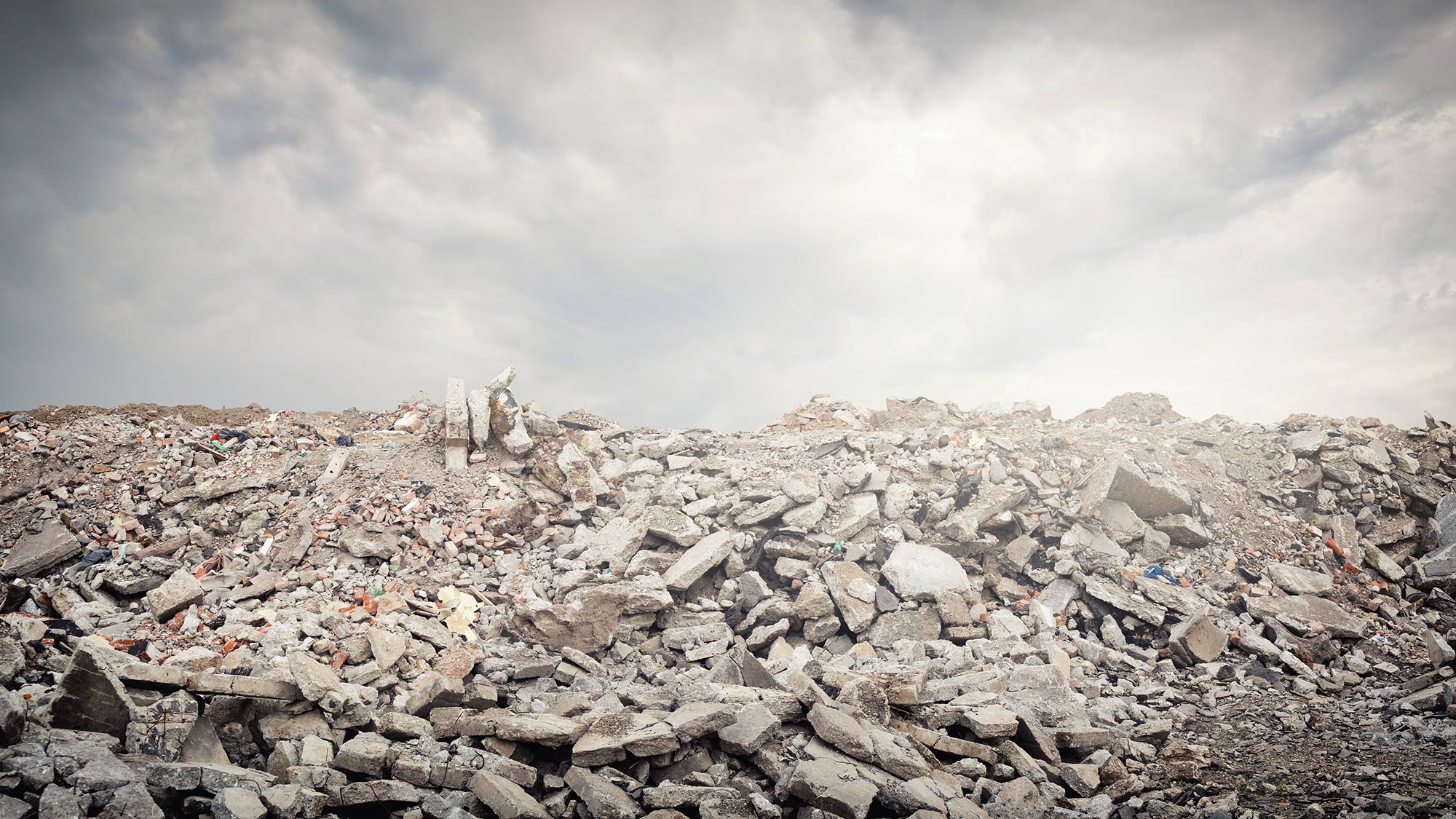The environmental impacts of construction and demolition (C&D) waste in Australia are significant. With 16.8% of the country's total annual waste being attributed to the construction industry, C&D waste is one of Australia's most important sources of waste. Despite more than 76% of all C&D waste being recycled, a large amount of it still goes to landfill, resulting in negative local environmental. Recent figures show that the amount of money spent on waste services, such as collection, transport and processing, has increased significantly since 2016-17 . This highlights the need for more sustainable practices within the construction industry.
Construction and demolition waste is becoming a more significant environmental challenge in Australia. As the population increases, construction activities expand, and natural resources become more scarce, it is imperative that we develop creative solutions to reduce the amount of waste created during construction projects. Through concrete waste recycling facilities, reuse of materials, and working with construction material suppliers to identify ways to upcycle waste, we can help to reduce the environmental footprint of construction and demolition projects while also helping to conserve resources. This article examines concrete recycling, the reuse of materials, and ways to upcycle construction and demolition waste to generate a more sustainable building environment.
Understanding the Problem: Current Waste Production and Rates of Recycling in Australia
Australia's construction industry produces an alarming amount of waste annually, contributing to a total annual production of 76 million tonnes . Of this figure, approximately 27% goes to landfill , and 16.8% is generated by the construction sector itself, with 87 tonnes of waste generated per million dollars added to the economy. Masonry materials have the highest recovery rate of 81% , but around 76% of all construction and demolition waste in Australia is recycled.
The amount spent on waste services has increased since 2016 and now stands at more than $17 billion annually , with the construction industry accounting for $2 billion yearly. This figure has risen by 35% from 2016-2017 and is a stark reminder of the growing amount of waste created each year.
Critical Benefits of Reusing Construction and Demolition Waste
Many environmental benefits are associated with reusing construction and demolition waste, such as saving energy, reducing air pollution, conserving natural resources, and improving soil quality.
Recycling construction and demolition (C&D) waste helps to reduce the environmental impacts associated with sending materials to landfill. It also provides an economic benefit because recycled concrete and other materials can be used instead of purchasing new materials, which can help keep building costs down. Additionally, recycling enables the reuse of valuable resources that would otherwise end up in landfills, reducing the burden on local waste services.
Concrete recycling is Australia's most effective way to reduce construction and demolition waste. Recycled concrete can be used as aggregate in concrete mixes or for other construction projects such as road building. Additionally, concrete can be reused to create new products, such as permeable concrete and concrete blocks, which can be used to create pathways and parking lots.
Reusing construction materials also helps to reduce the environmental impacts associated with manufacturing new products. Manufacturers can dramatically reduce their energy usage and carbon footprint by sourcing materials from local suppliers. This, in turn, reduces the cost of production and enables more sustainable construction projects.
Concrete recycling is a vital component of any construction project as it helps to reduce environmental impacts and provide economic benefits. By reusing concrete and other C&D materials, construction companies can help to create a more sustainable future for everyone. Additionally, Our new construction and demolition waste recycling facility on the Sunshine Coast is nearing completion and will be processing over 80,000 tonnes of waste every year.
Don't hesitate to contact us to schedule the disposal of your construction waste materials. We offer competitive rates and convenient service options to meet your needs.

